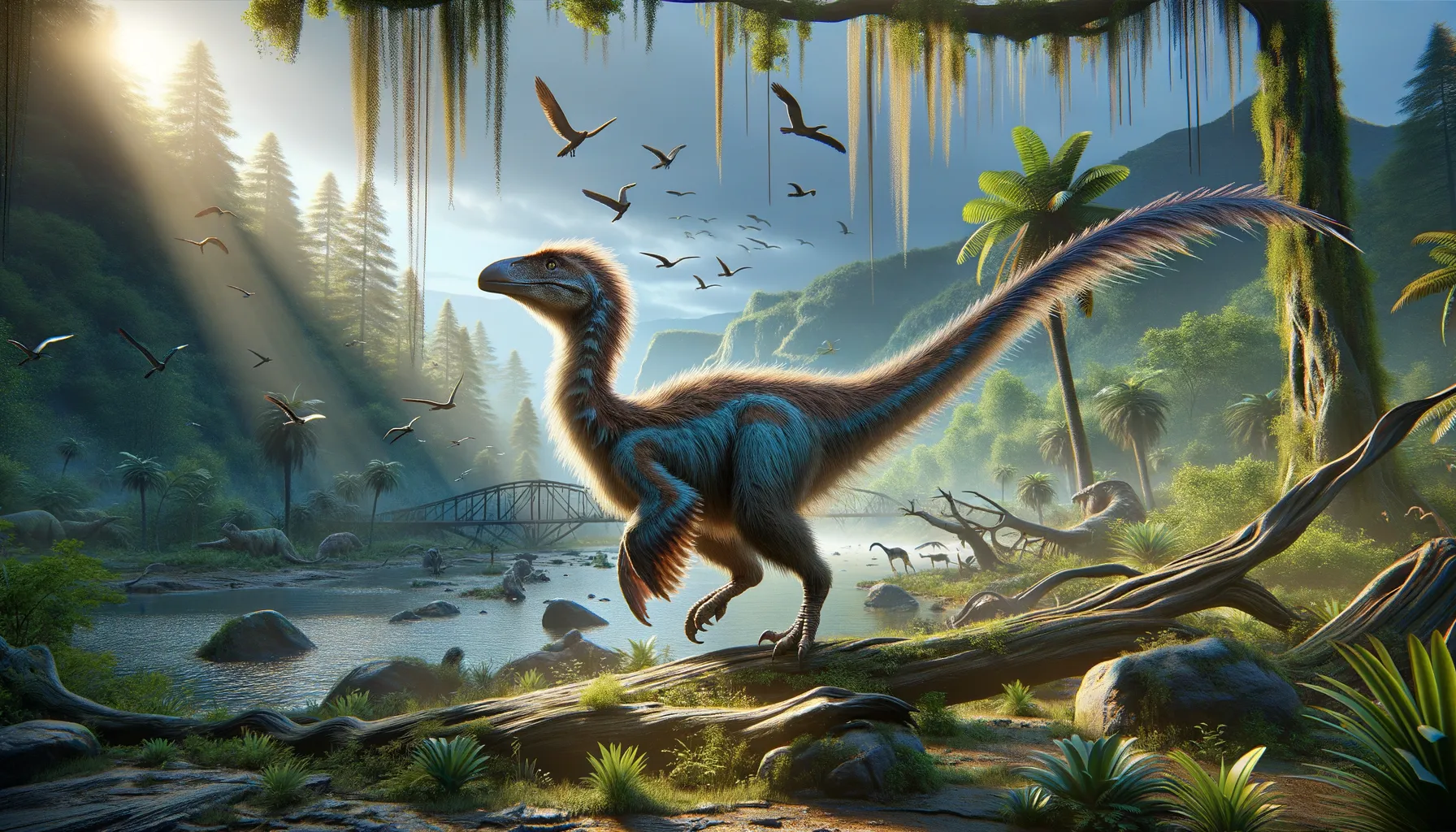
Palaeopteryx
The swift link between dinosaurs and birds.
Period
Jurassic
Length
Reached lengths of approximately 1 meter.
Height
About 30 cm tall.
Weight
Estimated around 1.5 kg.
Palaeopteryx is a relatively small dinosaur known for its bird-like characteristics. Thought to be a fast and agile creature, this dinosaur lived during the Jurassic period. Its fossilized remains provide clues to its likely feathered appearance, suggesting an evolutionary link between dinosaurs and modern birds. Despite its size, Palaeopteryx thrived in its lush, prehistoric environment.
Diet
Palaeopteryx primarily feasted on small organisms like insects and perhaps small vertebrates. Its diet would have included anything it could catch, using its speed to its advantage. Its small size meant that it required a high metabolism, needing frequent food intake.
Hunting
As an agile predator, it employed speed and stealth to capture prey. Palaeopteryx likely relied on surprise rather than brute strength to hunt effectively. Hunting in packs or pairs might have increased its success rate.
Environmental challenges
Survival required adapting to changing environmental conditions, such as fluctuating temperatures and varied prey availability. Fossil records suggest a diverse ecosystem with a need for adaptability. Interactions with larger predators posed significant survival threats. Climate shifts have always imposed natural selection pressures.
Speed
Likely swift due to its small size.
Lifespan
Probably around 10 to 20 years.
First discovery
Found in the early 20th century by accident.
Fun Facts
- Palaeopteryx is a small dinosaur that lived during the Jurassic period, around 150 million years ago.
- It is believed to be one of the earliest birds or bird-like dinosaurs, showcasing a blend of both dinosaur and avian features.
- The name 'Palaeopteryx' means 'ancient wing', highlighting its significance in the evolution of bird wings.
- Palaeopteryx was roughly the size of a raven, making it much smaller than many other dinosaurs of its time.
- Fossils of Palaeopteryx have been found in regions that used to be lush and forested, suggesting it lived in environments filled with trees.
- Some scientists think Palaeopteryx may have been capable of gliding, using its early wings to travel between trees.
- Despite its ancient age, Palaeopteryx provides crucial insights into how modern birds evolved from dinosaur ancestors.
Growth and Development
Palaeopteryx grew relatively quickly, reaching maturity at a young age to outpace predators. Development included the growth of feathers, indicating an evolutionary stride. Fossils illustrate stages of development that align with modern birds. Rapid juvenile growth was key to its survival and avoidance of predation.
Habitat
Palaeopteryx inhabited dense forests and open plains, which provided ample hiding spots and hunting opportunities. Its preferred environment included diverse flora supporting a wealth of insect life. Fossils indicate it lived in regions with a warm climate. Geological evidence suggests it thrived in areas with occasional water sources.
Interaction with other species
It existed alongside various other small and medium-sized dinosaurs. Palaeopteryx might have formed symbiotic relationships with different species, such as following larger herbivores to forage easier. Encounters with larger predators likely drove its evolutionary pressure for speed. Competition for food with similarly sized dinosaurs would have been common.
Natural lifespan
Its natural lifespan ranged from a decade to two, contingent on survival factors.
Reproduction
Egg laying was its primary reproductive strategy, likely in concealed nests. Parental care might have included protection until the offspring reached a certain independence level. Nest discovery indicates a communal nesting behavior. Fossils depict a clutch size typically smaller than contemporaries.
Social behaviour
Its social structure likely comprised small groups for mutual protection and efficiency in hunting. Display behaviors, perhaps involving feather exhibition, could have played a role in communication. Evidence suggests occasional social gatherings for either mating or cooperative feeding. Vocalization or feather ruffling could have been interaction modes.
Fossil locations
Fossils have predominantly been unearthed in what is now considered North America. Key discovery sites include remote forested areas previously unrecorded. Early 20th-century expeditions led to its initial unearthing. Consistent finds have emerged in sedimentary rock layers linked with the Jurassic period.
